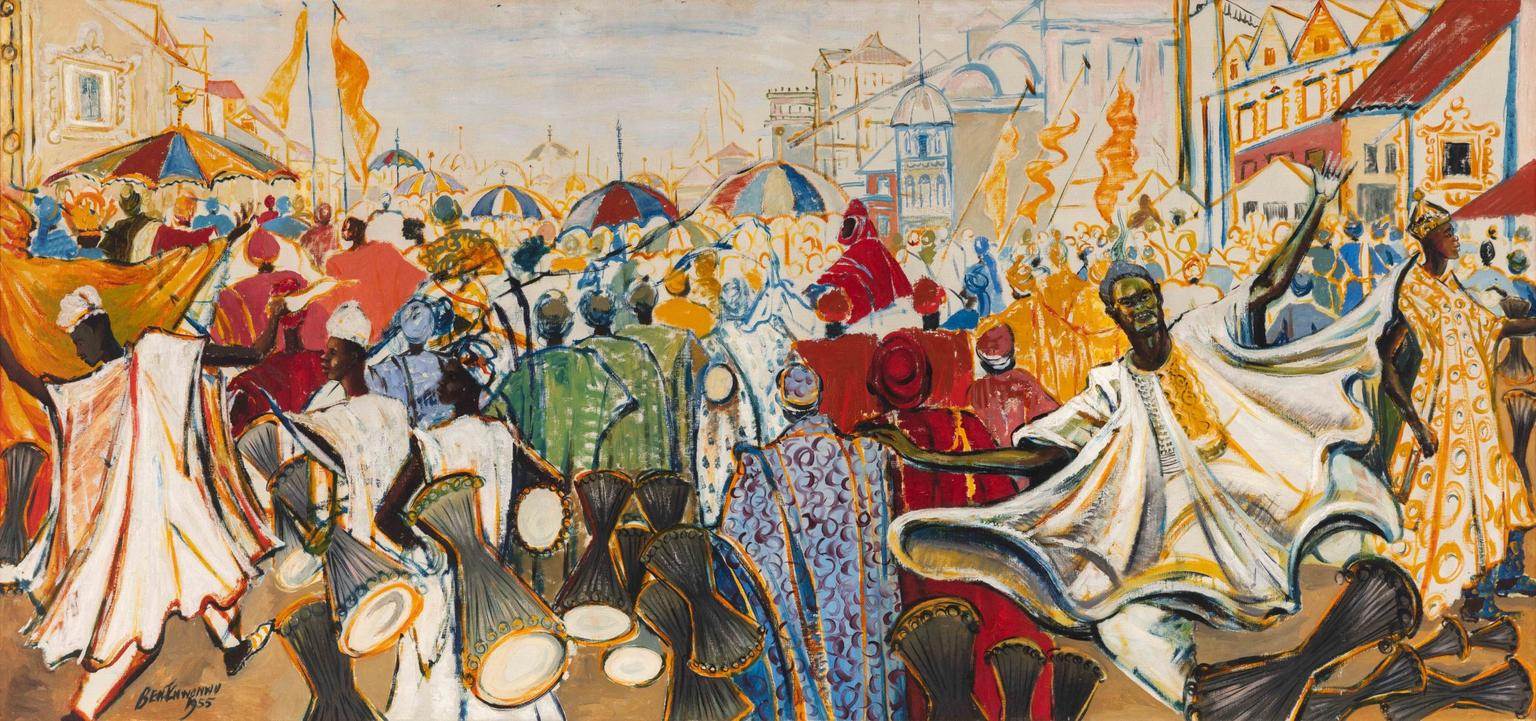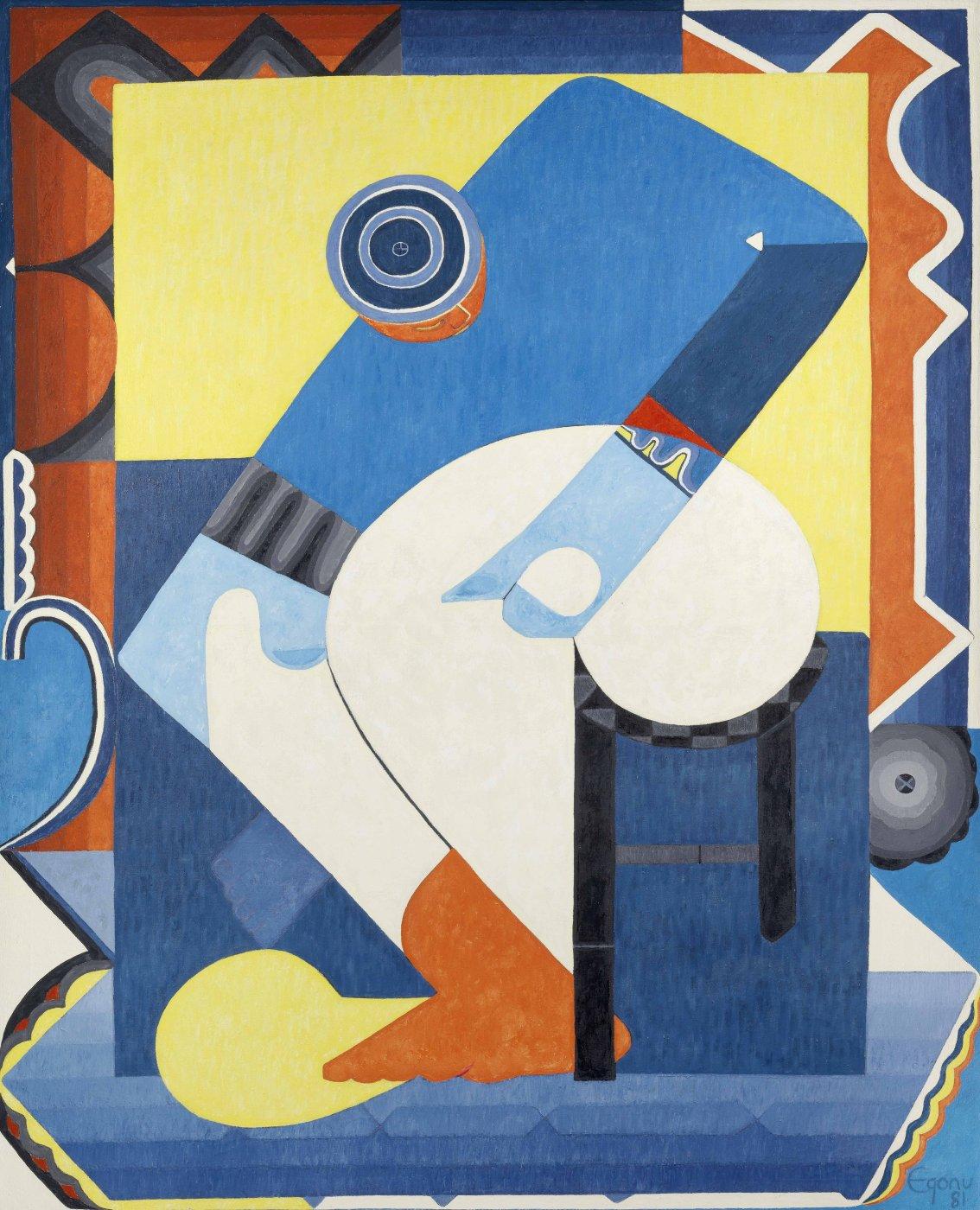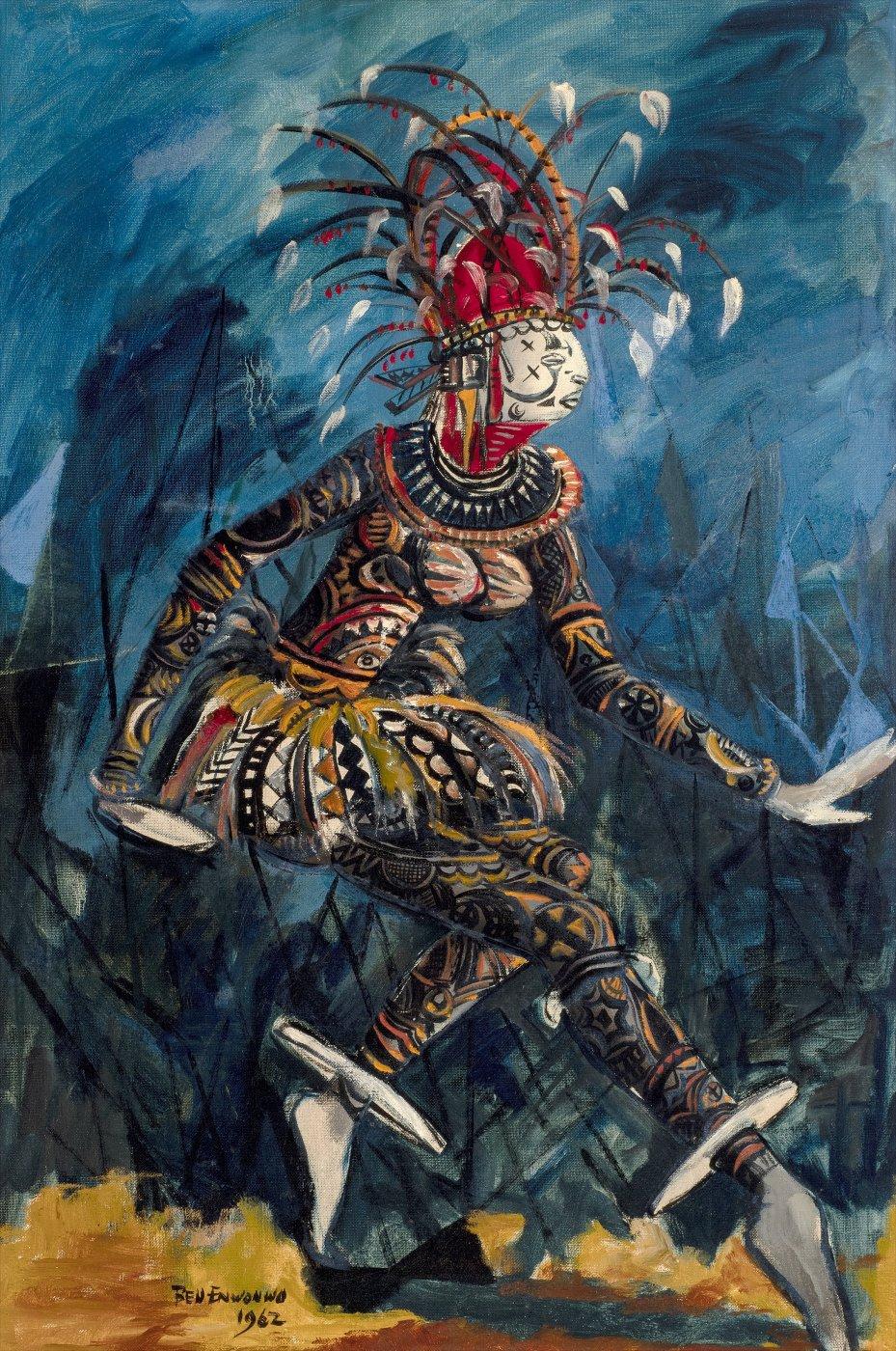Meet the curator behind Nigerian Modernism at Tate Modern

Elizabeth Fullerton speaks with Osei Bonsu, curator of Nigerian Modernism at Tate Modern in London, about the exhibition and its themes.
A version of this article first appeared in the autumn 2025 issue of Art Quarterly, the membership magazine of Art Fund.

What to expect
This new exhibition spotlights more than 50 artists and networks active in Nigeria, across 50 years, exploring their role in the development of global Modernism, through combining African and European traditions and shaping new cultural identities. Get 50% off exhibition tickets with a National Art Pass.
What was the starting point for the exhibition?
The development of modern art in Nigeria really gains momentum in the 1940s during the Second World War, with calls for national independence across various African nations and the rise of Pan-African ideologies. Under British colonial rule, artists found innovative ways of asserting their sense of self-identity through their reimagining of traditional African sculptural forms. Lamidi Olonade Fakeye and Olowe of Ise, for example, used forms of Yoruba carving to explore the encounter between Britain and Nigeria, as well as Christian religious iconography that, until then, hadn’t been represented in traditional Nigerian art. The exhibition takes you on a journey through the schools and movements that developed before and after Nigerian independence on 1 October 1960.
Did any of these groups regard themselves as movements?
There was no Nigerian Modernism movement, as such. The exhibition focuses on the multifaceted nature of the art scene, reflecting Nigeria’s religious and cultural diversity with more than 250 ethnic groups. There was an influential group of artists in the late 1950s, known as the Zaria Art Society, who rebelled against the orthodoxy of colonial education, synthesising indigenous and European Modernist forms. Later in the exhibition, we consider how artists responded to the Biafran War (1967-70), and its impact on the euphoria of independence. The influential Nsukka Group, which emerged from Nsukka University, reinterpreted Uli drawing, traditionally practised by Igbo women, to expand a language of abstraction that had existed in Nigeria for more than 100 years.

What specific themes are you drawing out in the exhibition?
One is artists resisting prescribed notions around African art. Aina Onabolu championed figurative painting, challenging a colonial assumption that African artists couldn’t master classic techniques. Another theme is dance and performance. Ben Enwonwu’s representation of traditional Igbo masquerade articulates ideas of ritual and spiritual transcendence, opening doors for others to engage with their own cultural and spiritual heritage. Yet another area is the contribution of women such as Ladi Kwali, a pioneering ceramicist, and Austrian Nigerian painter and textile artist Susanne Wenger, who became a priestess of the Yoruba religion. These artists sought to develop vital new approaches to traditional forms, complicating utilitarian and gendered associations with textiles and pottery.
For your research you spent time at Yinka Shonibare CBE’s Guest Artists Space Foundation in Lagos?
Yes, many major works in the exhibition are with private collectors, an exception for any Tate show, so my stay allowed me to identify and research key works and access an extraordinary network of curators, art historians and institutions such as the Yemisi Shyllon Museum and National Gallery of Nigeria, which are both now lenders to the exhibition.
What are some of the highlights?
Primeval Beast (1961), painted by Uche Okeke a year after Nigerian independence, depicts a monstrous bullfrog-type creature from Igbo folklore, representing an impassioned cry for a new nation, but also the conflict between preserving indigenous practices and the rise of Christianity, which these artists constantly negotiated. The final room is dedicated to Uzo Egonu, who moved to Britain after the Second World War, and struggled to reconcile his relationship with his homeland, being devastated by Nigeria’s civil war. His influential series ‘Stateless People’ boldly imagines the artist’s role in conceiving a post-nationalist identity and marked an important shift, ushering in a new phase for a global image of both Nigerian and African art.
What is the significance of staging this show in Britain now?
In the early 20th century, the colonial government encouraged artists to visit Britain as a site of pilgrimage to gain better opportunities and education. In turn, that brought this country an entirely new set of cultural, political and religious identities and values that are part of the multicultural society we celebrate today. It’s about honouring the contribution Nigerian artists have made to British culture as much as celebrating the modern art made in Nigeria. It’s important to look at both those developments because they happen in parallel and inform one another in important and profound ways
About the exhibition
Visit Nigerian Modernism at Tate Modern in London. Open from 8 October 2025 until 10 May 2026. Get 50% off with National Art Pass.